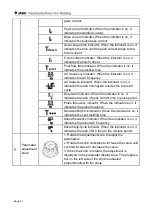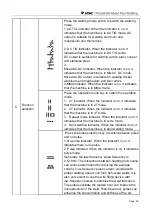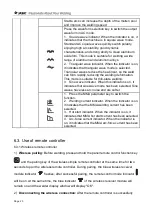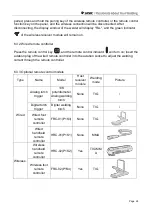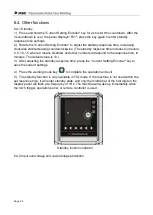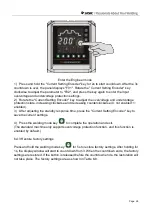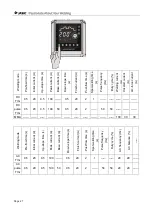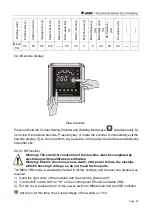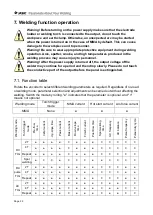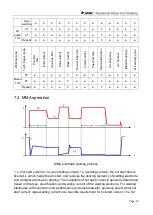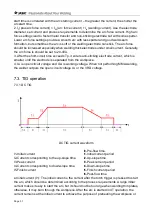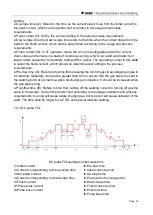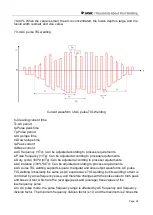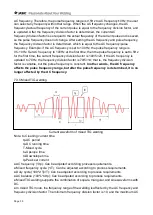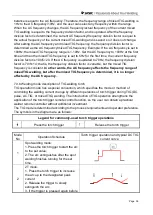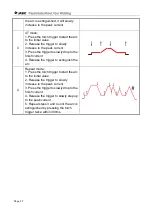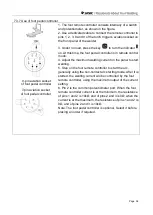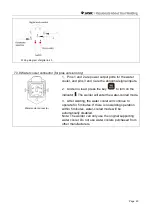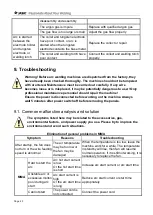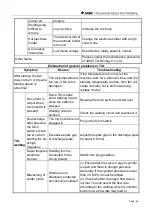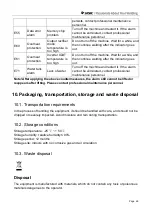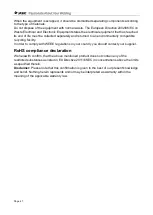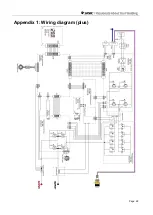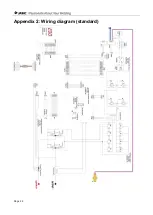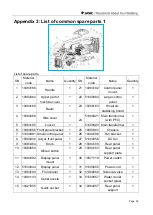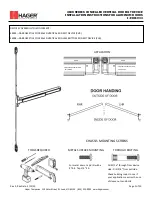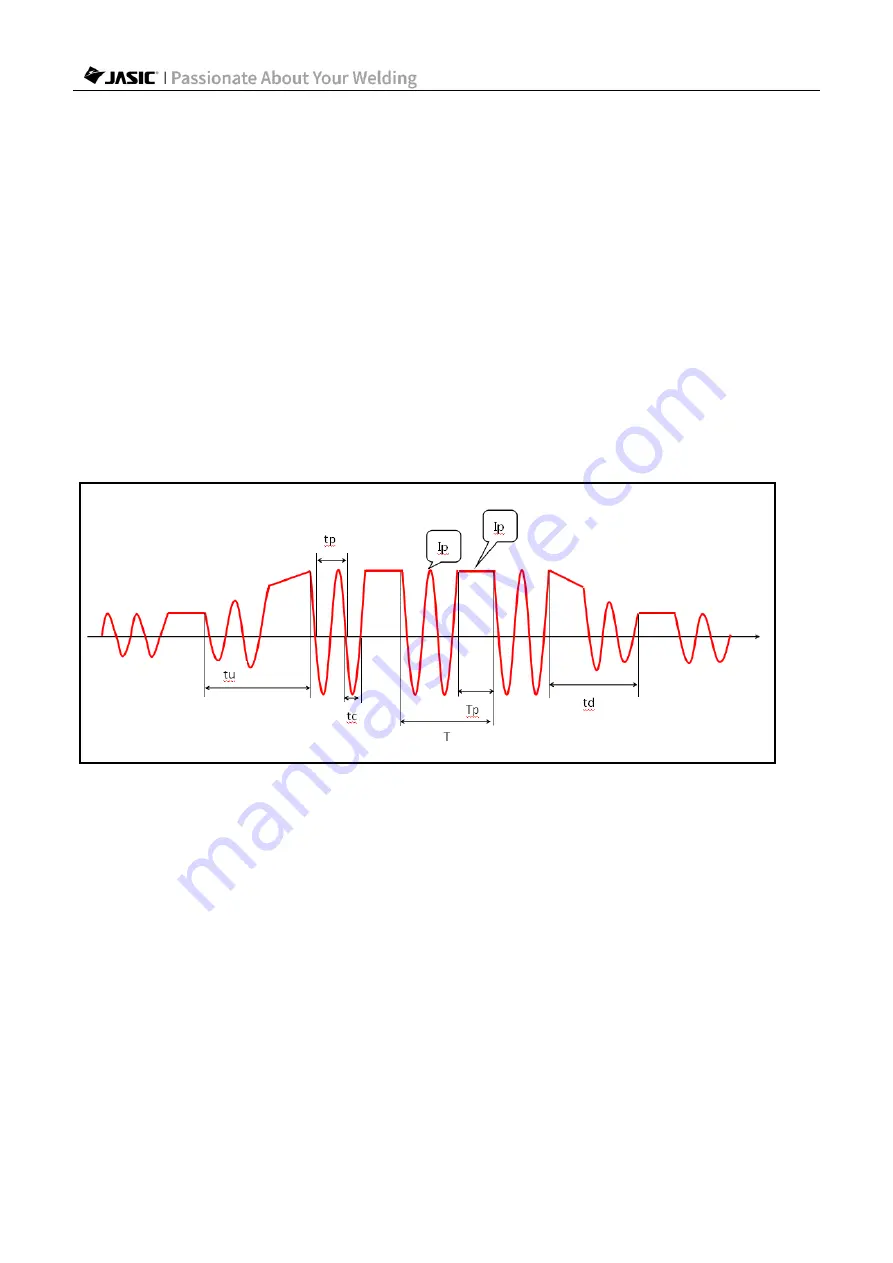
Page 35
AC frequency. Therefore, the pulse frequency range is 0.5Hz to AC frequency/10Hz; the user
can select any frequency within that range. When the AC frequency changes, the AC
frequency/actual frequency of the current pulse is equal to the frequency division factor, and
is updated. After the frequency division factor is determined, the current AC
frequency/division factor is set equal to the actual frequency of the current pulse and is saved,
so the pulse frequency does not change. After setting the AC frequency and pulse frequency,
the frequency division factor is determined, which is equal to the AC frequency/pulse
frequency. Example: if the AC frequency is set to 100Hz, the pulse frequency range is
0.5-10Hz. Set AC frequency to 100Hz at the first time, then the pulse frequency is set to 5Hz
for the first time, the current frequency division factor is 100/5=20. If the AC frequency is
updated to 70Hz, the frequency division factor is 70/5=14; that is, the frequency division
factor is variable, but the pulse frequency is constant.
In other words, the AC frequency
affects the pulse frequency range, but after the pulse frequency is determined, it is no
longer affected by the AC frequency.
7.3.5 Mixed TIG welding
Current waveform of mixed TIG welding
Note: tc-Cleaning current time
tp-AC period
tp-DC running time
T-Mixed cycle
tu-Upslope time
td-Downslope time
Ip-Peak set current
● AC frequency (1/tp): Can be adjusted according process requirements.
● Mixed frequency cycle (1/T): Can be adjusted according to process requirements.
● Duty cycle (100%*Tp/T): Can be adjusted according to process requirements.
● AC balance (100%*tc/tp): Can be adjusted according to process requirements.
● Mixed TIG welding supports the combination of square, triangular, and sine waveforms with
DC.
● In mixed TIG mode, the frequency range of the welding is affected by the AC frequency and
frequency division factor. The minimum frequency division factor is 10, and the maximum AC

